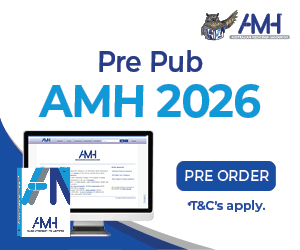A recent webinar took a deep dive into how the aged care sector is faring in digital transformation – the challenges and enablers, including investment, digital maturity and capabilities, cybersecurity and workforce. Here are some insights from four leading experts.
Hosted by Australian Ageing Agenda, the 90-minute webinar covered much ground, including the Aged Care Taskforce’s final report; sector strengths and weaknesses in digital transformation; initial steps that providers can take; areas to focus on and those to avoid; and integration and interoperability.
Most providers have an appetite to transform, said George Margelis, Independent Chair of the Aged Care Industry Information Technology Council (ACIITC) and one of the four panelists. An inaugural report conducted by the ACIITC assessing digital maturity in the sector found the level of self-reported innovation among providers was low.
“What we found is that everyone believed in the value of technology, but the heterogeneity of the sector was huge. What we saw was that yes, they all recognise the need to be more digitally mature. But the ability to do so has been hindered by the lack of maturity, lack of investment and lack of clarity about the best way forward.
“But they want to do it. They understand the reason why they should do it, but they need that extra bit of support to get them past those barriers,” said Mr Margelis.
And it wasn’t necessarily related purely to size, he says.
“Not all large providers are digitally mature and not all small providers are digitally immature. It seemed to be very much driven by their leadership and whether their commitment to reform.”
Leadership had to be top-down to be effective, said fellow panelist Gary McDonald, a senior account manager at software vendor Epicor.
“It’s got to come from the top: it’s got to come from the boards, it’s got to come from the owners, they’ve got to be behind it wholeheartedly. They’ve got to have a clear plan around it and that will enable the transformation to occur. It’s all about that support at the top level and working through the organisation to make sure they’re all on board. Transfer the mindsets as well as the software.”
Committed investment
Investment was key to innovation, argued Mr McDonald who has spent 40 years in the technology and digitisation space.
“Whether that is out in the field or whether that’s back offices, it doesn’t really matter, you’ve got to spend that time on investment. The large organisations have the infrastructure; they have the size to be able to put all of that money into creating that innovation. It’s the midsize and the smaller ones that have a little bit more of a struggle.”
The ability to invest in digital capabilities was often hindered by other competing considerations, the workforce being critical at the present time, acknowledged Mr Margelis.

Rob Covino, founder of aged care consultancy Mirus Australia concurred. “It does depend on the size of the organisation and the resources available. But as a general principal, I’ve always been more on the side of just start moving and take action. Whether it’s just having a meeting with some of your IT resources or individuals within the organisation that have an alignment or passion for change for innovation because they’ll be great people to start to align onto projects.
“I would lean on that as sort of first stepping stone and that’s probably where digital maturity for me can be summarised – just get moving and take a step, have that discussion, do something other than inertia.”
Develop a roadmap!
“The first thing providers should do is develop a robust digital roadmap, undertake a stocktake of all current software systems, assess the digital literacy and skills of the workforce and do user acceptance testing on current and future applications,” said registered nurse and educator Lorraine Poulos who has more than 35 years’ experience in the health and aged care sector.
“It’s looking at your current systems, are they fit for purpose now, and then thinking about the long-term requirements of all the stakeholders. Assessing the digital literacy not only of your workforce, but of all the end users – if you’re going to have consumer digital services, resident engagement, how do you support them? We have seen amazing things happening in residential and home care around that interface between consumers, carers, the providers and the workforce,” she said.
Mr Margelis suggested aged care facilities understand their own processes as a first step.
“Look at which of those processes can be automated, which processes can be removed, and which can be delegated. So, understanding your own organisation first, understanding what’s happening internally, understanding that technology’s role is to enhance processes. So therefore, you need to understand your processes and then bring in your team, get them actively engaged with the IT people.
“They should be focusing on their own data, understanding what they have captured, how they’re capturing it, how they can capture it more efficiently and more accurately because ultimately the digital transformation will succeed or fail based on the quality of that data.”
Silos and duplication
One of the challenges has been fragmented applications and software programs in aged care. Duplication with multiple points of data entry and working in silos were issues raised by the panel.
“You’ll see a clinical system running over here with nursing staff and then you’ll see over there the finance team, but they’re manually passing data to each other. It just surprises me that they’re still duplicating,” said Mr Covino.
“Many times we’ll go in and somebody’s got a finance problem, so that’s all they’re focused on, but you forget about the clinical systems that are on the side there and you’ve got to get that in place. You’ve got to get those flows happening,” said Mr McDonald.
Mr Margelis suggested quick wins at the “back of house” as critical. “The focus is often on the clinical side, but the reality is the back of house is what drives everything. Quick wins, which don’t have any office clinical risks, demonstrate to the people on the floor that by doing things more efficiently in the back end, their job’s easier.
“Therefore, they’re more likely to adopt technology going forward. Simple things like making sure there’s enough linen available every day means that the nurses or the carers on the floor don’t have that problem to worry about. So ‘back of house’ first and then work your way to the front of house.”
The approach by many providers was that of a grand view and big ideas, but then come the practicalities of implementation, cost, management and resourcing, said Mr McDonald.
“What we see is always the grand plan and instead of going into bite-sized chunks and gradually digitising the business, everyone wants to do it big bang. You don’t want to do it as a big bang because the big bang is going to be the thing that’s going to hurt you. You want to get the foundation right.”
My Health Record
Sharing data between various people involved in providing care was critical, said Ms Poulos. There’s work being done to get aged care providers greater access to your My Health Record.
“My Health Record at the moment is a repository. It’s not perfect, it’s a repository of static data. What we need to do is become much more dynamic, so it becomes an information tool which passes the data around dynamically,” said Ms Poulos.
“We need to start thinking about what parts of My Health Record are relevant to people in aged care so they can actually have access to the parts that are relevant to them. So that we don’t have to go through a web portal and go through the process of logging in and finding all the data manually.
“We also need to start thinking about how we more tightly integrate the healthcare services. People going in and out of hospital has always been a major challenge in aged care. Making sure that the information going from the residential aged care facility to the hospital is accurate is important. No one knows the cognitive status of a resident more than the aged care facility. That information is critical in decision making.”
Access the webinar here








